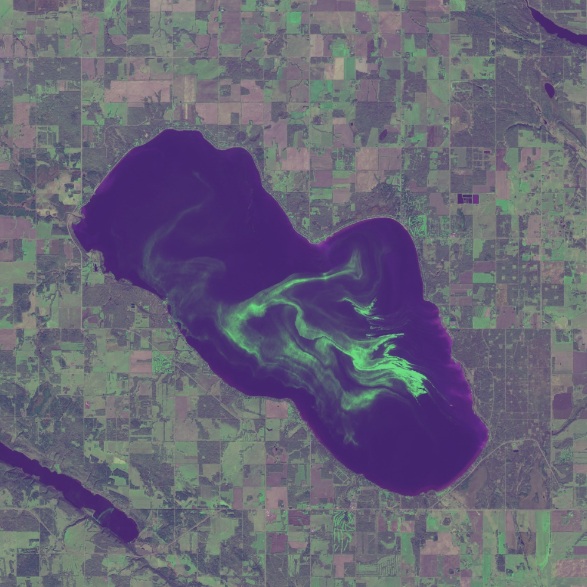
Algal Bloom Monitoring in Alberta Lakes
Categories: Geospatial and Remote Sensing
Status: In Progress
About the Project
Tracking and forecasting of cyanobacterial harmful algal blooms in Alberta using remote-sensing techniques under a changing climate
During the summer, nutrient-rich lakes can develop large blooms of phytoplankton. Some types of phytoplankton, like cyanobacteria (blue-green algae), can contain toxins that are harmful to humans and animals. Every year, usually in July and August, many of Alberta’s recreational lakes become filled with blue-green algae. In response to these blooms, Alberta Health Services posts Blue-Green Algae Health Advisories which caution Albertans and their pets to avoid all contact with them. These advisories can also result in major negative socio-economic impacts to Alberta’s recreation and tourism activities, to real estate values, and to Indigenous communities. As a result, knowing when, where, and why harmful algal blooms occur is important to scientists, policy makers, stewards, and lake enthusiasts.
The ABMI is collaborating with Dr. Rolf Vinebrooke at the University of Alberta, the Alberta Lake Management Society, Alberta Health, Alberta Health Services, Alberta Environment and Protected Areas, Environment and Climate Change Canada, Associated Environmental Consultants Inc., the Pigeon Lake Watershed Association, Lac La Biche County, and the Wabamun Watershed Management Council to better understand these blooms.
– Rolf Vinebrooke
Six lakes in Alberta, Canada (Lac La Biche, Ethel, Wabamun, Sylvan, Pigeon, and Nakamun) were monitored in the summers of 2023 and 2024. Lake water samples are collected at the same time the Sentinel-2 satellite flies directly overhead collecting imagery. The satellite imagery is used to estimate chlorophyll-a concentrations (a green pigment found in algae), and the water samples are analyzed at the University of Alberta to identify types and concentrations of algae or cyanobacteria present, and to test water quality.
Together, the water samples and satellite data track algal blooms appearing on the lakes. By combining these data, researchers can develop models of current and historical blooms, and eventually predict future blooms, too!
Moving forward, the bloom models are being used to develop an online app, freely available to anyone, to visualize and track blooms on these six lakes in "near real time," and to look at historical blooms. Researchers anticipate releasing the first version of the algal bloom app in late 2025, and hope to expand the work to include more lakes in Alberta in the future.
Stay tuned for future project updates and announcements!
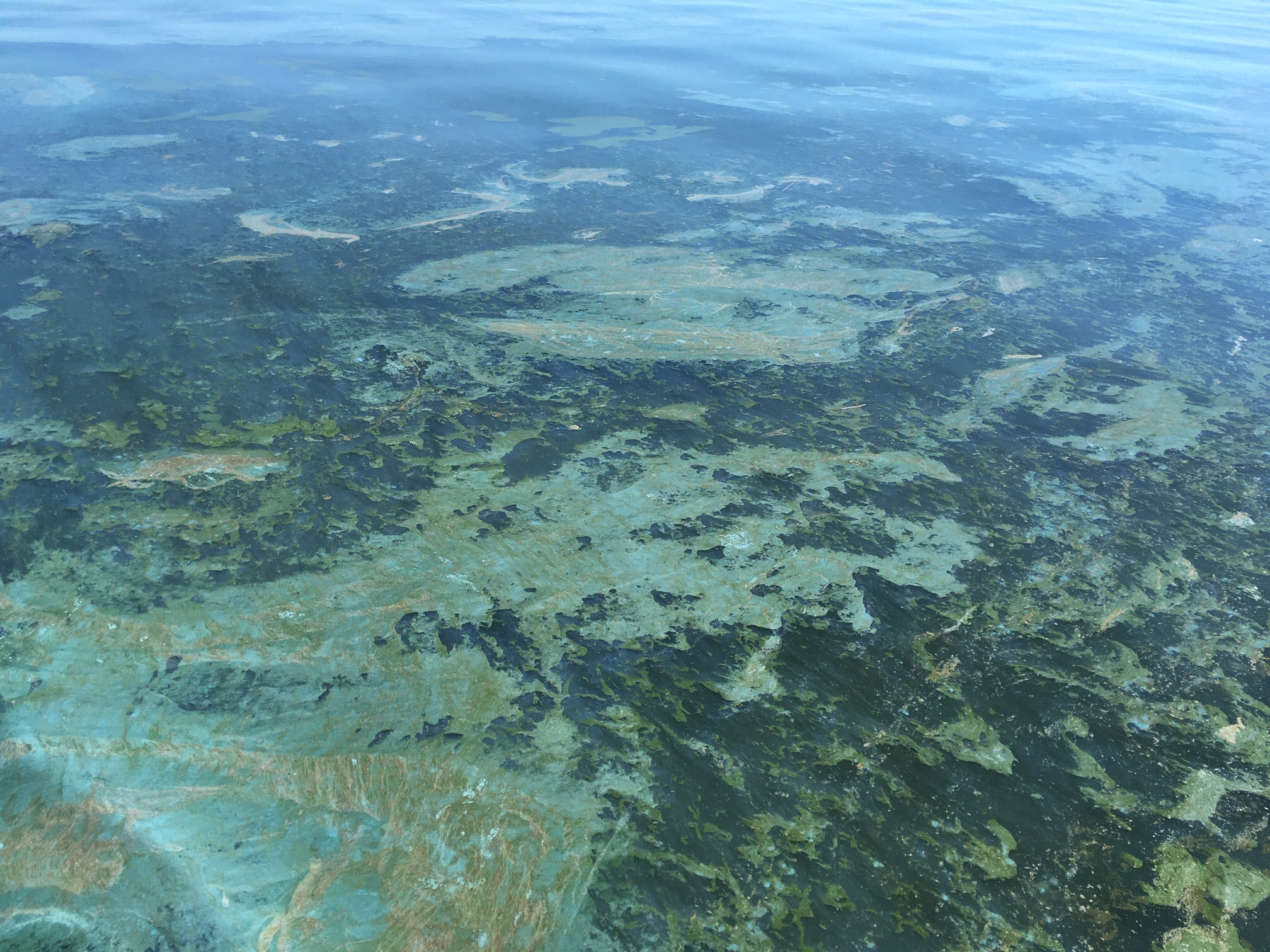_ALMS.jpg)
Chlorophyll, a pigment in algal blooms, is visible from space.
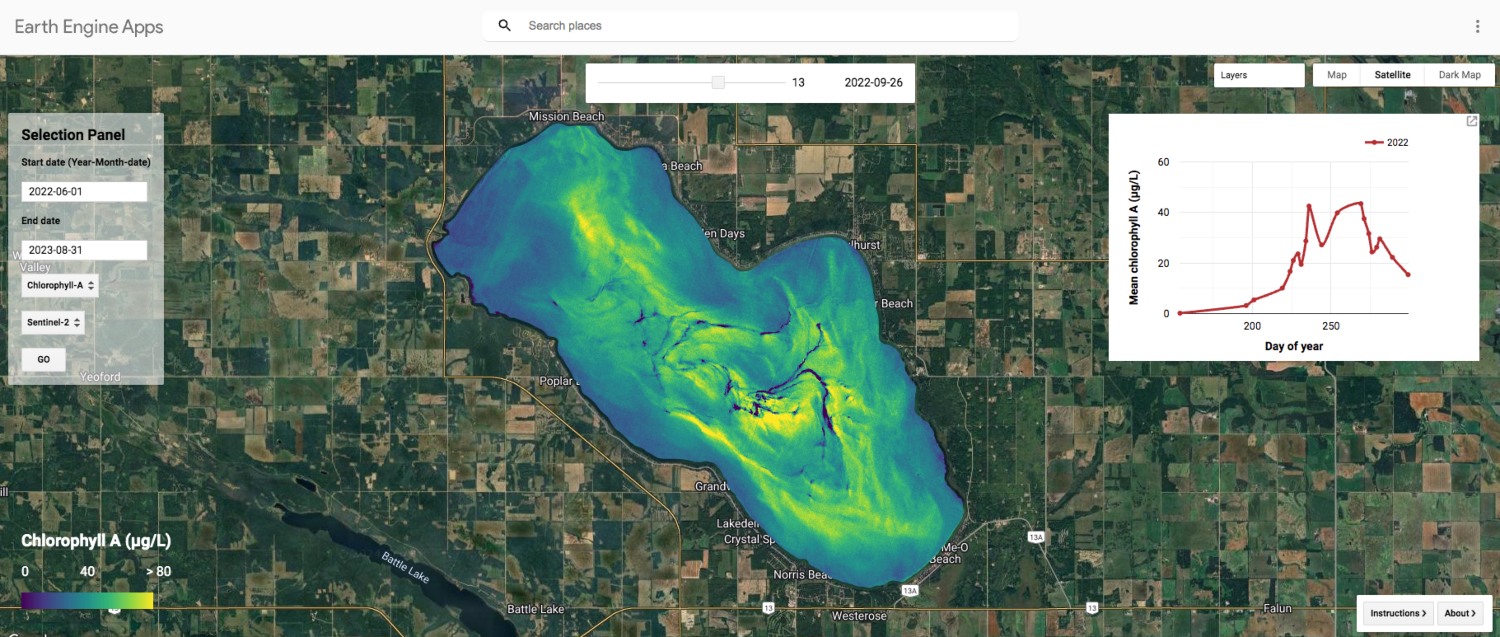
This screen shot shows a web tool built during a previous project at Pigeon Lake, Alberta that helps users visualize and download Sentinel-2 derived chlorophyll -a predictions from various dates. This was a joint project between: the Alberta Biodiversity Monitoring Institute, the University of Alberta, the Alberta Lake Management Society, Alberta Environment and Parks, the Pigeon Lake Watershed Association, and Alberta Health.
Major Findings To Date
- Robust modeling of current blooms with Sentinel-2: Rigorous statistical analyses of multi-spectral satellite imagery and coincident lake water samples revealed optimum spectral indices for producing robust regression models for predicting chlorophyll-a concentrations across the 6 lakes for 2017 to 2024, and beyond.
- No two lakes are alike: Each of the 6 lakes included in the project shows varying frequencies and strengths of algal blooms, according to both the lake water samples and the satellite-based models. Pigeon Lake and Lac La Biche show regular, strong blooms over the years while blooms were not observed ateither Sylvan or Ethel lakes.
- Blooms are incredibly dynamic: The whole-lake algal bloom maps from satellite modeling revealed significant shifts in the presence, intensity, and distribution of these blooms over the period of a few days, demonstrating just how dynamic these events can be throughout each season.
- Modeling revealed seasonal bloom patterns: In general, algal blooms were most frequent and most intense during the late summer and early fall (mid-August to mid-October) across the study lakes, for our study period. In some cases algal blooms tended to originate in certain parts of a lake. For example, early heightened chlorophyll concentrations preceding a bloom were often first observed in the northwest end of Pigeon Lake, and the northeast basin of Lac La Biche.
- Examining historical trends with Landsat: We are extending our monitoring back in time by leveraging Landsat imagery dating to the 1980’s, using machine learning algorithms trained on recent coincident Landsat data and lake water samples. Historical algal bloom statistical trends analyses on the project’s 6 lakes is underway, and preliminary findings indicate alignment with long-term government lake monitoring sample data.
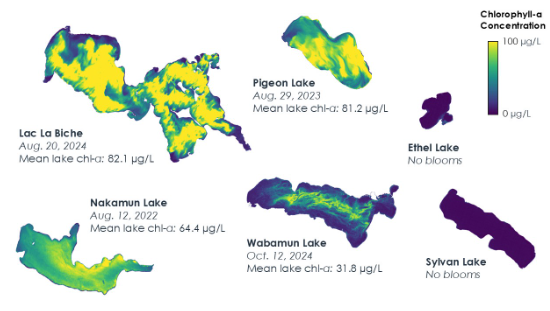
Peak blooms modeled for the 6 project lakes between 2017 - 2024. Note: lakes are not to scale.
A core component of this project is knowledge mobilization and engagement. Public-facing communications activities, ranging from public presentations and news interviews to blog and social media posts, have been completed to raise public awareness about the project and the issue of blue-green algae in Alberta lakes.
Some examples can be found here:
- ABMI Blog: Monitoring Blue-Green Algae Blooms in Alberta from Space
- Folio Magazine: Seven things you should know about blue-green algae
- CBC News Article: Alberta scientists tracking blue-green algae blooms using satellite imagery
- Jen Hird presents at Geo4Good’23: Supporting land and resource management in Alberta, Canada, with Earth Engine to provide open access, provincial scale geospatial data sets (2:10)
- Dr. Rolf Vinebrooke interviewed by CBC: June 2024
- Alberta Innovates Article: Using satellites to track toxic algal blooms from space (June, 2025)
In addition, a multi-pronged and multi-year engagement approach is being undertaken to ensure the web-application under development will best serve the needs of its end-users.
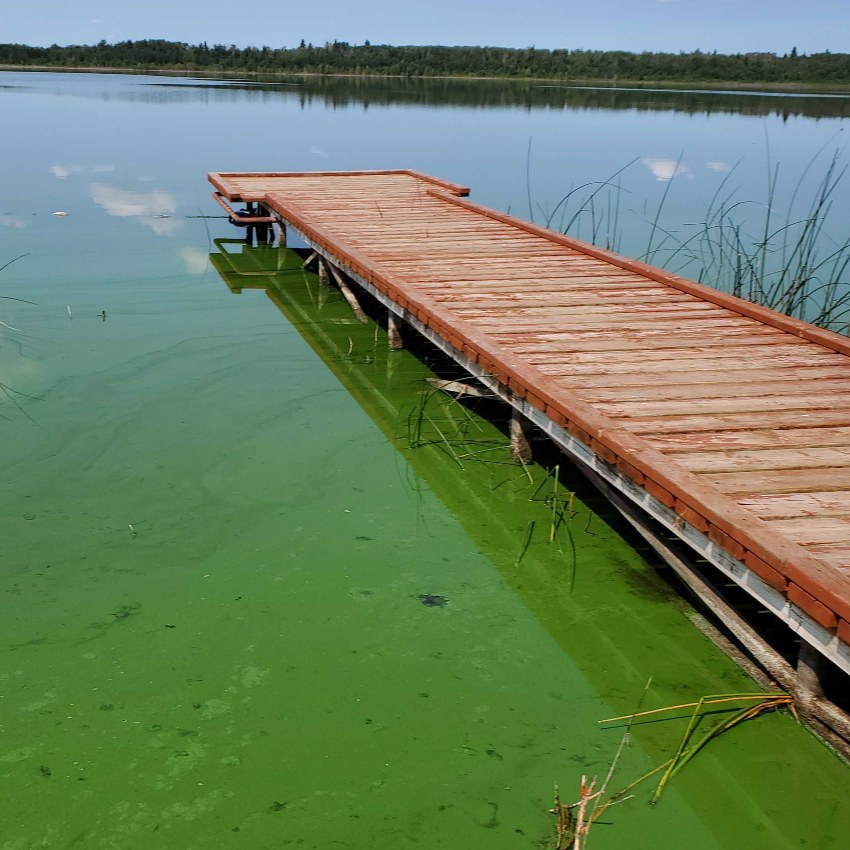
Cyanobacteria in Pigeon Lake
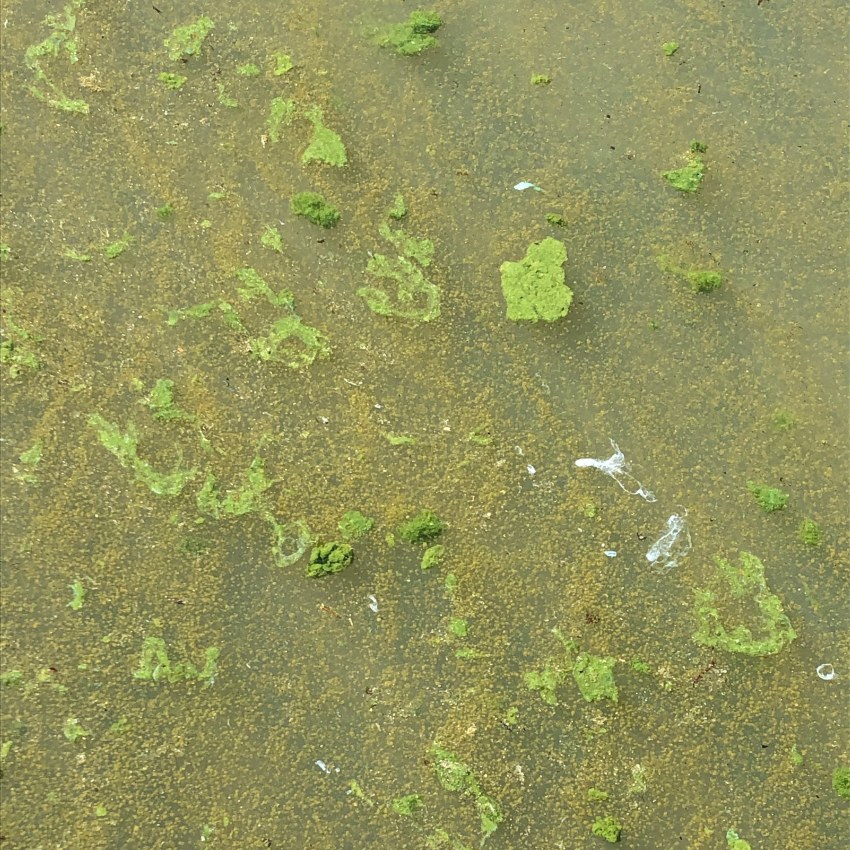
Close-up of cyanobacteria
This project, Tracking and forecasting of cyanobacterial harmful algal blooms in Alberta using remote-sensing techniques under a changing climate, is funded by Alberta Innovates, through the Water Innovation Program, and Alberta Health.
BERA focuses on understanding the effects of industrial disturbance on natural ecosystem dynamics in the boreal forest, and developing strategies for restoring disturbed landscapes in a system that is under pressure from climate change.
This project focuses on tracking habitat loss, gain, and change over time.
In collaboration with the Caribou Habitat Recovery Program (CHRP) through the Forest Resource Improvement Association of Alberta (FRIAA), the ABMI is developing a detailed vegetation inventory along linear features for the Richardson caribou range in northeastern Alberta.



